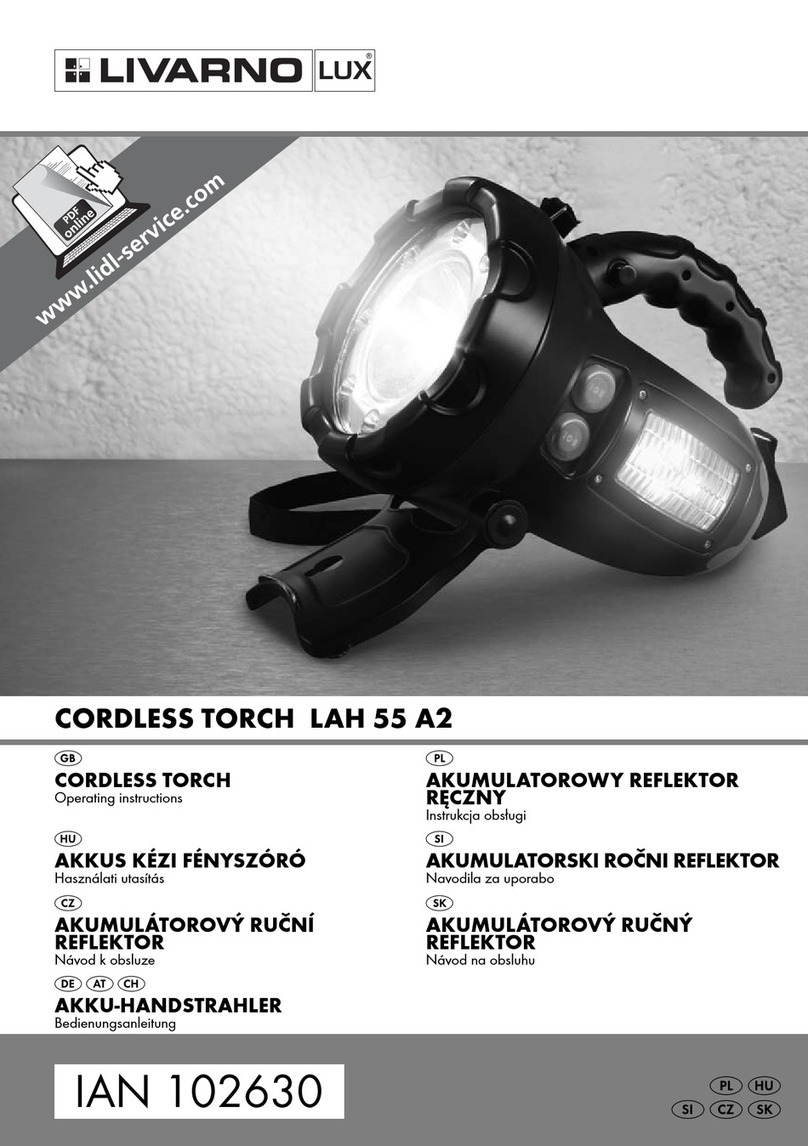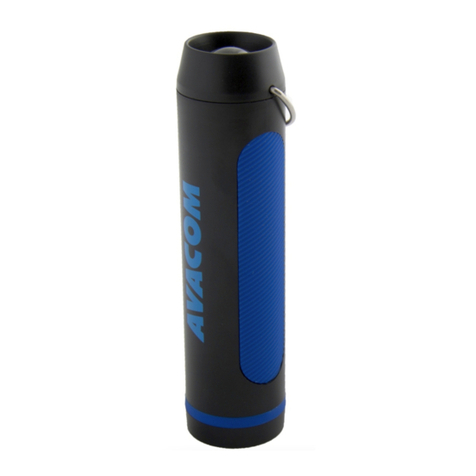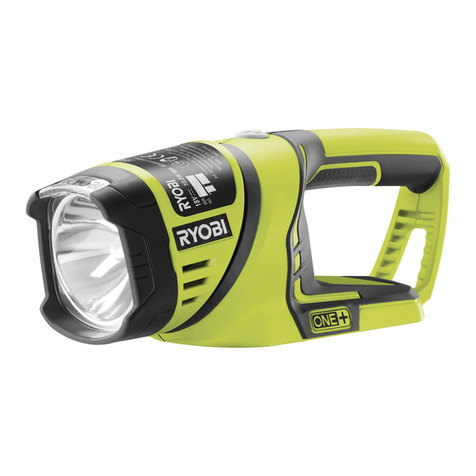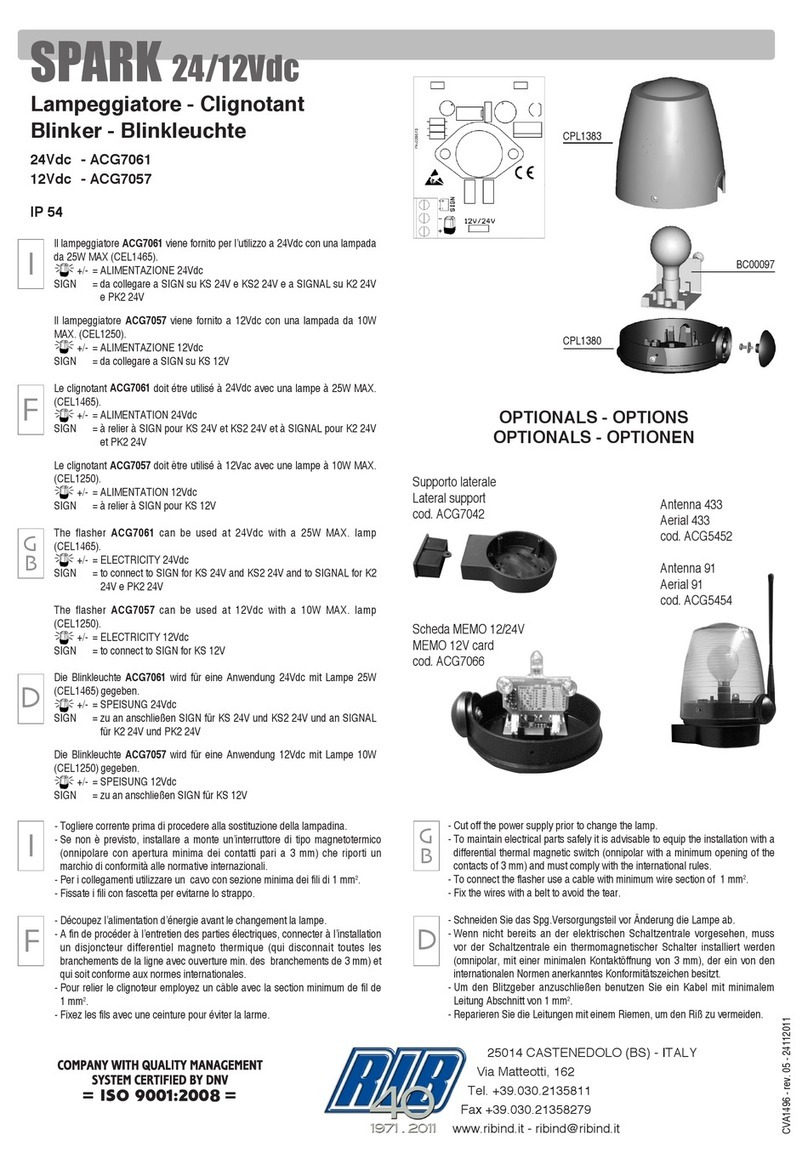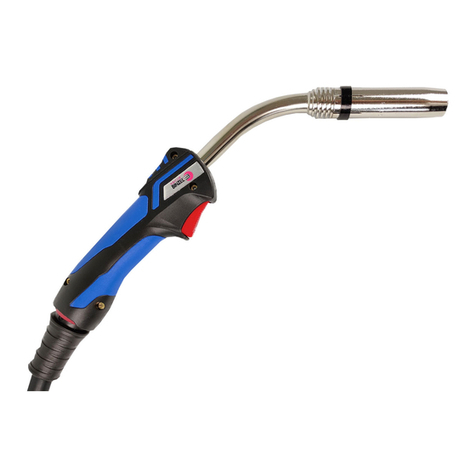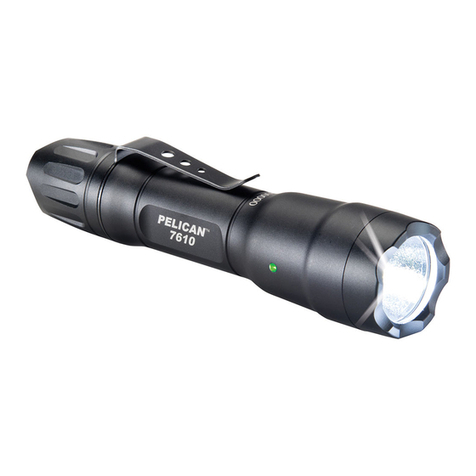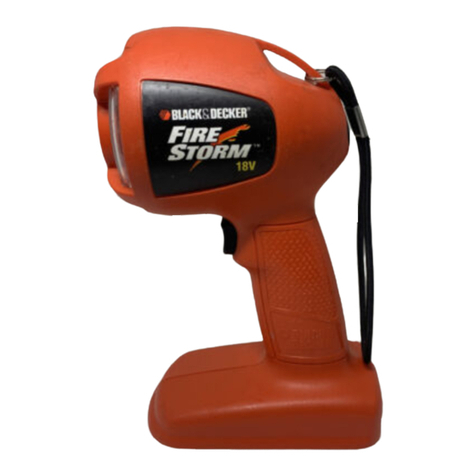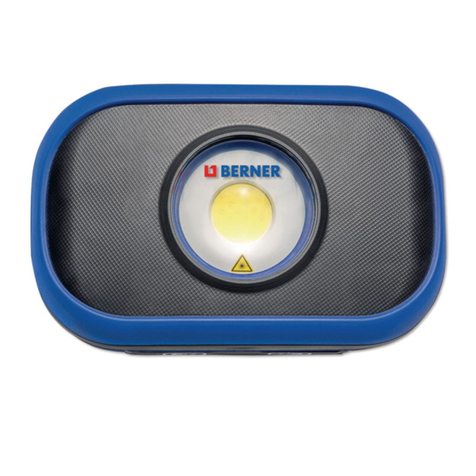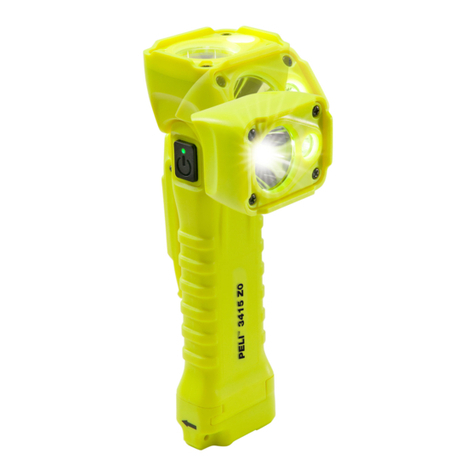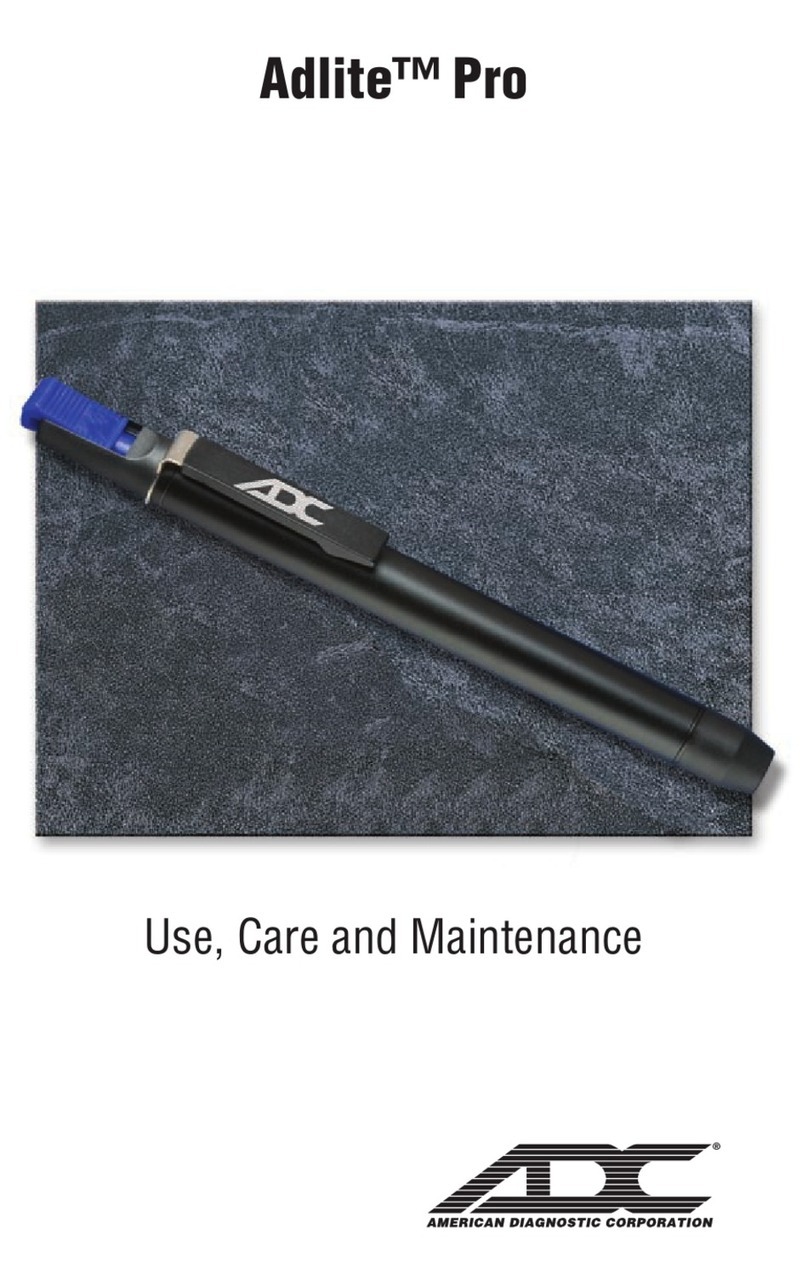Gentec 140T with 141C Operating instructions

1
Read all Instruction, SAVE THESE INSTRUCTION
Safety, Set-Up, and Operating Instructions
Gas Welding, Cutting, Brazing & Heating
There are many hazards to be considered when using oxy-fuel
welding, cutting, brazing and heating equipment. Proper safety
precautions must be taken when using such equipment.
Read, understand, and implement all safety precautions prior
to performing any welding, cutting, heating or brazing
operation!
This handbook is offered as a practical guide to the safe
operation of this equipment.
This Outfit comes complete with Torch Handle
Reverse Flow Check Valves.
(Note: See page 14 for check valve maintenance.)
Reverse flow check valves should
always be used between the torch
handle and the regulator during use of the welding
outfit. Check valves are used to prevent mixed
gases from flowing back into the hoses or regulators.
Oxygen or fuel separately are not explosive.
However, when the two are mixed together in a hose
or regulator they can ignite and cause an explosion,
resulting in injury or damage.
16
READ ALL
INSTRUCTIONS,
SAVE THESE
INSTRUCTIONS
9-WI9CV-1198

2
Introduction
This booklet contains information and instructions that are
intended for experienced operators and those who are working
under the close supervision of skilled welders. Operation and
maintenance of the welding and cutting equipment should
conform to the provisions of ANSI standard Z49.1, “Safety in
Welding & Cutting”; AWS manual C4.2-78, “Operatorʼs Manual
for Oxy-Fuel Gas Cutting” also deserves careful study.
IMPORTANT
SAFEGUARDS
Basic safety precautions should always be
followed to reduce the risk of fire and
personal injury, including the following:
1. Never use acetylene pressure over 15 PSIG.
2. Never use damaged or leaking equipment.
3. Never use oil or grease on or around Oxygen equip-
ment and cylinders. Oil or grease is easily ignited and
burns violently in the presence of oxygen.
4. Never use Oxygen or fuel gas to blow dirt or dust off
clothing or equipment. Pure oxygen supports combustion
and a spark can ignite oxygen-saturated clothing.
5. Never light a torch with matches or a lighter. Always
use a striker.
6. Always wear the proper welding goggles, gloves and
clothing when operating Oxy-Acetylene equipment,
Pants should not have cuffs.

3
7. Do not carry lighters, matches or other flammable
objects in pockets when welding or cutting.
8. Always be aware of others around you when using a
torch.
9. Be careful not to let welding hoses come into contact
with torch flame or sparks from cutting.
10. Before installing the regulators “crack the cylinder valves
by opening each valve slightly and then closing. This will
clear the valves of dust or dirt that could be carried to the
regulators and cause damage. Do not discharge flow of
gas at any person or flammable material.
11. Make sure all connections are tight. Do not force
connections. Never test for leaks with a flame. Use a
soapy water solution and check for bubbles.
12. Before lighting the torch purge oxygen and fuel gas
separately. This will help prevent the improper mixing of
gases.
13. Always use recommended pressure settings. Improper
pressures are wasteful. Watch for extreme pressure build
up in the regulators which signifies they need repair.
14. “Good Housekeeping” in work area is a “must”.
Prepare your work area by moving out of the vicinity, any
combustible material.
15. Always have a fire extinguisher handy.
14
Shutting Down Equipment
1. Turn off oxygen valve on torch, then turn off acetylene valve
on torch.
2. Close both cylinder valves.
3. Open the oxygen control valve and release the pressure in
the hose and regulator.
4. Close the oxygen control valve.
5. Turn the pressure adjusting screw on the oxygen regulator
counterclockwise until there is no pressure on the adjusting
spring and the screw turns freely.
6. Open the fuel control valve and release the pressure in the
hose and regulator.
7. Close the fuel control valve.
8. Turn the pressure adjusting screw on the fuel regulator
counterclockwise until there is no pressure on the adjusting
spring and the screw turns freely.
9. All pressure gauges should read zero “0” PSI.
Check Valve Maintenance
Leak test check valves at least every six(6) months as follows:
1. Shut off the fuel gas supply and disconnect the hose from
the check valve.
2. Set the oxygen regulator to 5 PSI. Open all gas valves on
the torch or cutting attachment.
3. Plug the tip and check for reverse flow to the fuel gas check
valve. Use soapy water or immerse in water to check for
leaks. Set pressure to zero after the test.
4. Reconnect the fuel gas hose and disconnect the oxygen hose.
5. Repeat steps 2 and 3 using the fuel gas regulator as the
pressure source.
6. Reconnect the hoses and purge the system before use.

4
16. Always purge the system after use. When shutting
down, close cylinder valves, then bleed the system by
emptying both hoses independently. First, open torch
oxygen “oxy” needle valve, drain line until pressure is zero,
then close “oxy” needle valve. Repeat process with torch
fuel needle valve.
17. Do not use frayed or damaged hose.
18. Never use the torch as a hammer or to knock slag from
work.
19. Always work in a well ventilated area. Flammable
materials burn violently in an oxygen atmosphere. Flames
and burning materials such as tobacco smoking must be
absent when using oxygen.
READ ALL
INSTRUCTIONS,
SAVE THESE
INSTRUCTIONS
13
Proper Flame. A neutral flame (fig. 13) is used for almost all
gas welding. The oxy-acetylene flame consumes all oxygen in
the air around the welding area, which leaves an uncontami-
nated weld area and a weld of maximum strength. An oxidiz-
ing flame is rarely used, but a carburizing flame is occasionally
helpful when flame hardening or brazing.
If you experience a backfire or flashback (a
shrill hissing sound caused by the flame burning inside the
mixer area.), turn off the oxygen valve immediately and
then the fuel valve. Follow the shut down procedures on
page 14. Allow the equipment to cool off before attempting to
reuse. If the problem reoccurs, bring the equipment to a
qualified repair technician.
Inner White Cone
No Acetylene Feather
Bluish to OrangeInner White Cone
Nearly Colorless
Inner Cone
Acetylene Feather Light Orange
PureAcetyleneFlame
Neutral Flame
Oxidizing Flame
Carburizing Flame
Various Acetylene Welding Flames
Nearly Colorless
Bluish to Orange
White
fig. 13

5
SET UP AND OPERATING GUIDE
1. Secure cylinders. (As noted in safety precautions.)
2. While standing to one side, “crack” each cylinder valve. (fig. 2)
“Cracking” is to quickly open and close the valve, allowing
gas to escape and clearing the valve of any foreign
material.
If oil or grease is found, discontinue use of
cylinder immediately and contact your supplier.
fig. 2
Cylinders are highly pressurized. Handle
with extreme care. Never allow cylinders to be knocked over,
dropped, or subjected to excessive heat.
Opening Oxygen
Cylinder Valve
12
f. Turn on the acetylene torch valve slowly until smoke
subsides and the flame jumps away from the end of the
tip slightly. (fig. 11)
g. Slowly open the oxygen valve until a brilliant neutral
flame is reached. (fig. 12) (If the flame has a smooth
inner cone the flame is neutral)
fig. 11
fig. 12
Adjusting Flame
Neutral Flame
Flame setting is increased by opening the
torch control valves or increasing the operating pressure. Never
reduce the flame setting. This will cause the tip or nozzle to
overheat which will result in flashback. If less heat is required,
use a smaller tip or nozzle.

6
Never stand in front of or in back of a
regulator when opening a cylinder valve.
4. Regulator adjusting screws should be turned counterclockwise to
relieve pressure on diaphragm before opening cylinder
valves. (Fig. 4) If this is not done, pressure from cylinder
can damage diaphragm and render regulator inoperable.
fig. 3
3. Attach regulators to proper cylinders and tighten securely
with a wrench. (fig. 3) Make sure they are tightened in
correct directions. (Normally clockwise for oxygen and
counterclockwise for acetylene.)
Attaching Oxygen
Regulator
11
11. Neutral flame adjusting
a. Refer to cutting tip or welding nozzle chart to determine
the proper regulator pressures.
b. Open oxygen valve on the torch handle (and the preheat
oxygen valve on cutting attachment), adjust the oxygen
regulator to the desired working pressure. Then close
the oxygen valve.
c. Open acetylene valve on the torch handle, adjust the
acetylene regulator to the desired working pressure.
Then close the acetylene valve.
d. Hold torch in one hand and spark lighter in the other. (fig
10)
fig. 10
e. Open acetylene torch valve about 1/4 turn and ignite the
acetylene gas coming out of the tip.
Always point torch away from any person
when lighting.
Lighting Fuel Gas

7
5. Both cylinder valves and regulator connections should be
checked for leaks. Stand so the cylinder valve is between
you and the regulator. Slowly open cylinder valve. (fig. 5)
An approved leak detector should be used.
Acetylene cylinder valve should be opened a
maximum of one turn.
fig. 4
fig. 5
Regulator
Adjustment
Opening Cylinder Valve
10
fig. 8
10. Check all connections for leaks. Adjust regulators to normal
operating pressure and, using an approved leak detection
solution, check for leaks at all connections. If leaks are
found tighten nuts more securely. If leaks still persist,
discontinue use and call your supplier.
Never set acetylene regulator above 15
PSIG working pressure.
fig. 9
Attaching Welding Nozzle to Torch Handle
Check for “o” rings

8
6. Connect proper hose to regulator. (Green to oxygen and
red to acetylene.) Tighten nuts securely with wrench. (fig. 6)
If any sign of oil or grease is found, discon-
tinue use immediately.
7. Blowing out hoses: Do this to one regulator at a time and in
a well ventilated area to avoid creating conditions for fires
or explosions.
a. Turn oxygen regulator adjusting screw to allow 5 PSIG
to pass through hose.
b. Allow oxygen to flow approximately 10 seconds to purge
the hose.
c. Repeat these steps for acetylene regulator.
Note: New hose contains a preservative talc which must be
blown out before using.
fig. 6
Attaching Hose
to Regulator
9
8. Connect hoses to the check valve that is installed on the
torch handle. (Oxygen is right-handed and fuel gas is
left-handed.) (fig 7)
If any traces of oil or grease are found, do
not use. Contact your supplier immediately.
fig. 7
9. Connect cutting attachment, welding or heating nozzle to
the torch handle. (fig 9)
There must be two(2) “o” rings on the cone
end in an undamaged condition. The absence of either “o” ring
creates a condition that allows pre-mixing of oxygen and fuel
gases. This can lead to flashback within the torch handle or
cutting attachment. (fig 8)
Always check cone end coupling nut and torch head for
damage or oil presence. If either are found contact your
supplier.
Attaching Hose to Check
Valve Installed on Torch

8
6. Connect proper hose to regulator. (Green to oxygen and
red to acetylene.) Tighten nuts securely with wrench. (fig. 6)
If any sign of oil or grease is found, discon-
tinue use immediately.
7. Blowing out hoses: Do this to one regulator at a time and in
a well ventilated area to avoid creating conditions for fires
or explosions.
a. Turn oxygen regulator adjusting screw to allow 5 PSIG
to pass through hose.
b. Allow oxygen to flow approximately 10 seconds to purge
the hose.
c. Repeat these steps for acetylene regulator.
Note: New hose contains a preservative talc which must be
blown out before using.
fig. 6
Attaching Hose
to Regulator
9
8. Connect hoses to the check valve that is installed on the
torch handle. (Oxygen is right-handed and fuel gas is
left-handed.) (fig 7)
If any traces of oil or grease are found, do
not use. Contact your supplier immediately.
fig. 7
9. Connect cutting attachment, welding or heating nozzle to
the torch handle. (fig 9)
There must be two(2) “o” rings on the cone
end in an undamaged condition. The absence of either “o” ring
creates a condition that allows pre-mixing of oxygen and fuel
gases. This can lead to flashback within the torch handle or
cutting attachment. (fig 8)
Always check cone end coupling nut and torch head for
damage or oil presence. If either are found contact your
supplier.
Attaching Hose to Check
Valve Installed on Torch

7
5. Both cylinder valves and regulator connections should be
checked for leaks. Stand so the cylinder valve is between
you and the regulator. Slowly open cylinder valve. (fig. 5)
An approved leak detector should be used.
Acetylene cylinder valve should be opened a
maximum of one turn.
fig. 4
fig. 5
Regulator
Adjustment
Opening Cylinder Valve
10
fig. 8
10. Check all connections for leaks. Adjust regulators to normal
operating pressure and, using an approved leak detection
solution, check for leaks at all connections. If leaks are
found tighten nuts more securely. If leaks still persist,
discontinue use and call your supplier.
Never set acetylene regulator above 15
PSIG working pressure.
fig. 9
Attaching Welding Nozzle to Torch Handle
Check for “o” rings

6
Never stand in front of or in back of a
regulator when opening a cylinder valve.
4. Regulator adjusting screws should be turned counterclockwise to
relieve pressure on diaphragm before opening cylinder
valves. (Fig. 4) If this is not done, pressure from cylinder
can damage diaphragm and render regulator inoperable.
fig. 3
3. Attach regulators to proper cylinders and tighten securely
with a wrench. (fig. 3) Make sure they are tightened in
correct directions. (Normally clockwise for oxygen and
counterclockwise for acetylene.)
Attaching Oxygen
Regulator
11
11. Neutral flame adjusting
a. Refer to cutting tip or welding nozzle chart to determine
the proper regulator pressures.
b. Open oxygen valve on the torch handle (and the preheat
oxygen valve on cutting attachment), adjust the oxygen
regulator to the desired working pressure. Then close
the oxygen valve.
c. Open acetylene valve on the torch handle, adjust the
acetylene regulator to the desired working pressure.
Then close the acetylene valve.
d. Hold torch in one hand and spark lighter in the other. (fig
10)
fig. 10
e. Open acetylene torch valve about 1/4 turn and ignite the
acetylene gas coming out of the tip.
Always point torch away from any person
when lighting.
Lighting Fuel Gas

5
SET UP AND OPERATING GUIDE
1. Secure cylinders. (As noted in safety precautions.)
2. While standing to one side, “crack” each cylinder valve. (fig. 2)
“Cracking” is to quickly open and close the valve, allowing
gas to escape and clearing the valve of any foreign
material.
If oil or grease is found, discontinue use of
cylinder immediately and contact your supplier.
fig. 2
Cylinders are highly pressurized. Handle
with extreme care. Never allow cylinders to be knocked over,
dropped, or subjected to excessive heat.
Opening Oxygen
Cylinder Valve
12
f. Turn on the acetylene torch valve slowly until smoke
subsides and the flame jumps away from the end of the
tip slightly. (fig. 11)
g. Slowly open the oxygen valve until a brilliant neutral
flame is reached. (fig. 12) (If the flame has a smooth
inner cone the flame is neutral)
fig. 11
fig. 12
Adjusting Flame
Neutral Flame
Flame setting is increased by opening the
torch control valves or increasing the operating pressure. Never
reduce the flame setting. This will cause the tip or nozzle to
overheat which will result in flashback. If less heat is required,
use a smaller tip or nozzle.

4
16. Always purge the system after use. When shutting
down, close cylinder valves, then bleed the system by
emptying both hoses independently. First, open torch
oxygen “oxy” needle valve, drain line until pressure is zero,
then close “oxy” needle valve. Repeat process with torch
fuel needle valve.
17. Do not use frayed or damaged hose.
18. Never use the torch as a hammer or to knock slag from
work.
19. Always work in a well ventilated area. Flammable
materials burn violently in an oxygen atmosphere. Flames
and burning materials such as tobacco smoking must be
absent when using oxygen.
READ ALL
INSTRUCTIONS,
SAVE THESE
INSTRUCTIONS
13
Proper Flame. A neutral flame (fig. 13) is used for almost all
gas welding. The oxy-acetylene flame consumes all oxygen in
the air around the welding area, which leaves an uncontami-
nated weld area and a weld of maximum strength. An oxidiz-
ing flame is rarely used, but a carburizing flame is occasionally
helpful when flame hardening or brazing.
If you experience a backfire or flashback (a
shrill hissing sound caused by the flame burning inside the
mixer area.), turn off the oxygen valve immediately and
then the fuel valve. Follow the shut down procedures on
page 14. Allow the equipment to cool off before attempting to
reuse. If the problem reoccurs, bring the equipment to a
qualified repair technician.
Inner White Cone
No Acetylene Feather
Bluish to OrangeInner White Cone
Nearly Colorless
Inner Cone
Acetylene Feather Light Orange
PureAcetyleneFlame
Neutral Flame
Oxidizing Flame
Carburizing Flame
Various Acetylene Welding Flames
Nearly Colorless
Bluish to Orange
White
fig. 13

3
7. Do not carry lighters, matches or other flammable
objects in pockets when welding or cutting.
8. Always be aware of others around you when using a
torch.
9. Be careful not to let welding hoses come into contact
with torch flame or sparks from cutting.
10. Before installing the regulators “crack the cylinder valves
by opening each valve slightly and then closing. This will
clear the valves of dust or dirt that could be carried to the
regulators and cause damage. Do not discharge flow of
gas at any person or flammable material.
11. Make sure all connections are tight. Do not force
connections. Never test for leaks with a flame. Use a
soapy water solution and check for bubbles.
12. Before lighting the torch purge oxygen and fuel gas
separately. This will help prevent the improper mixing of
gases.
13. Always use recommended pressure settings. Improper
pressures are wasteful. Watch for extreme pressure build
up in the regulators which signifies they need repair.
14. “Good Housekeeping” in work area is a “must”.
Prepare your work area by moving out of the vicinity, any
combustible material.
15. Always have a fire extinguisher handy.
14
Shutting Down Equipment
1. Turn off oxygen valve on torch, then turn off acetylene valve
on torch.
2. Close both cylinder valves.
3. Open the oxygen control valve and release the pressure in
the hose and regulator.
4. Close the oxygen control valve.
5. Turn the pressure adjusting screw on the oxygen regulator
counterclockwise until there is no pressure on the adjusting
spring and the screw turns freely.
6. Open the fuel control valve and release the pressure in the
hose and regulator.
7. Close the fuel control valve.
8. Turn the pressure adjusting screw on the fuel regulator
counterclockwise until there is no pressure on the adjusting
spring and the screw turns freely.
9. All pressure gauges should read zero “0” PSI.
Check Valve Maintenance
Leak test check valves at least every six(6) months as follows:
1. Shut off the fuel gas supply and disconnect the hose from
the check valve.
2. Set the oxygen regulator to 5 PSI. Open all gas valves on
the torch or cutting attachment.
3. Plug the tip and check for reverse flow to the fuel gas check
valve. Use soapy water or immerse in water to check for
leaks. Set pressure to zero after the test.
4. Reconnect the fuel gas hose and disconnect the oxygen hose.
5. Repeat steps 2 and 3 using the fuel gas regulator as the
pressure source.
6. Reconnect the hoses and purge the system before use.

2
Introduction
This booklet contains information and instructions that are
intended for experienced operators and those who are working
under the close supervision of skilled welders. Operation and
maintenance of the welding and cutting equipment should
conform to the provisions of ANSI standard Z49.1, “Safety in
Welding & Cutting”; AWS manual C4.2-78, “Operatorʼs Manual
for Oxy-Fuel Gas Cutting” also deserves careful study.
IMPORTANT
SAFEGUARDS
Basic safety precautions should always be
followed to reduce the risk of fire and
personal injury, including the following:
1. Never use acetylene pressure over 15 PSIG.
2. Never use damaged or leaking equipment.
3. Never use oil or grease on or around Oxygen equip-
ment and cylinders. Oil or grease is easily ignited and
burns violently in the presence of oxygen.
4. Never use Oxygen or fuel gas to blow dirt or dust off
clothing or equipment. Pure oxygen supports combustion
and a spark can ignite oxygen-saturated clothing.
5. Never light a torch with matches or a lighter. Always
use a striker.
6. Always wear the proper welding goggles, gloves and
clothing when operating Oxy-Acetylene equipment,
Pants should not have cuffs.

1
Read all Instruction, SAVE THESE INSTRUCTION
Safety, Set-Up, and Operating Instructions
Gas Welding, Cutting, Brazing & Heating
There are many hazards to be considered when using oxy-fuel
welding, cutting, brazing and heating equipment. Proper safety
precautions must be taken when using such equipment.
Read, understand, and implement all safety precautions prior
to performing any welding, cutting, heating or brazing
operation!
This handbook is offered as a practical guide to the safe
operation of this equipment.
This Outfit comes complete with Torch Handle
Reverse Flow Check Valves.
(Note: See page 14 for check valve maintenance.)
Reverse flow check valves should
always be used between the torch
handle and the regulator during use of the welding
outfit. Check valves are used to prevent mixed
gases from flowing back into the hoses or regulators.
Oxygen or fuel separately are not explosive.
However, when the two are mixed together in a hose
or regulator they can ignite and cause an explosion,
resulting in injury or damage.
16
READ ALL
INSTRUCTIONS,
SAVE THESE
INSTRUCTIONS
9-WI9CV-1198
This manual suits for next models
22
Table of contents
Popular Flashlight manuals by other brands
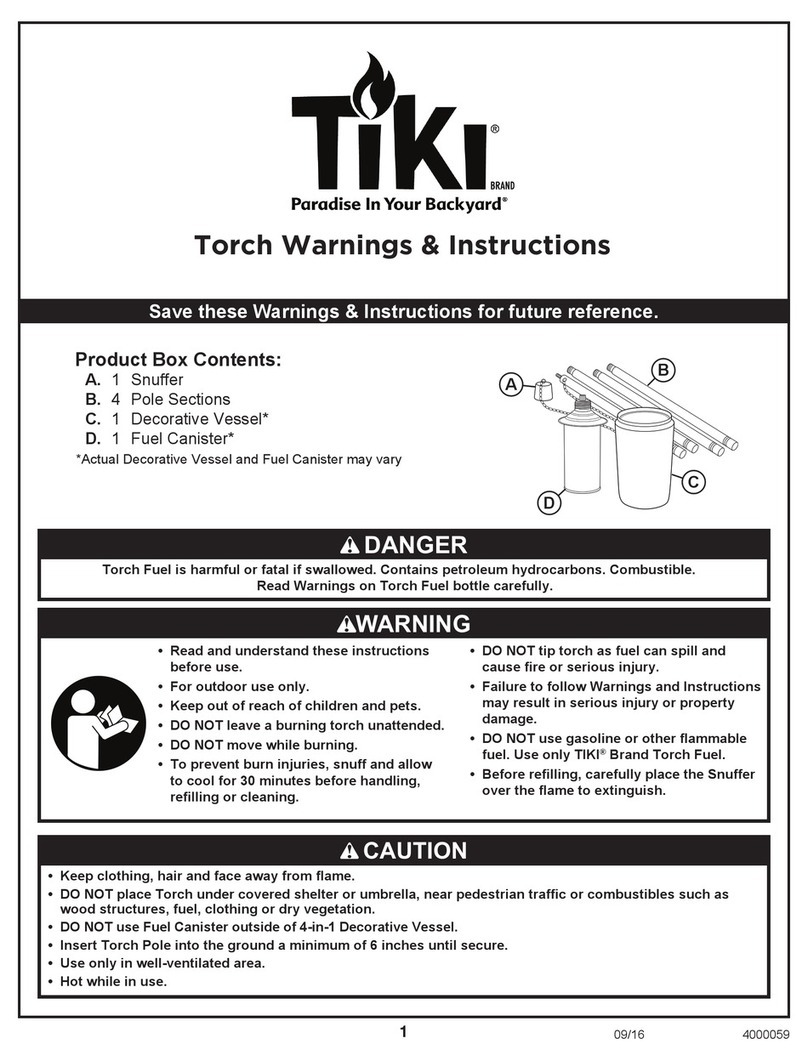
tiki
tiki Cabos Warnings and Instructions

Fervi
Fervi 0338 Operation and maintenance manual

Milwaukee
Milwaukee M18 IL Original instructions
Spectronics
Spectronics Spectroline LeakTracker SPI-LT instruction manual
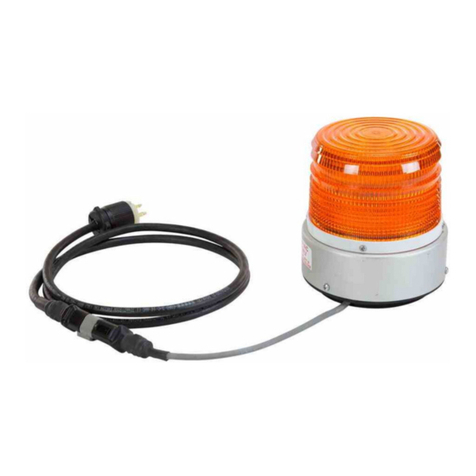
Larson Electronics
Larson Electronics SLEDB-110V-M instruction manual
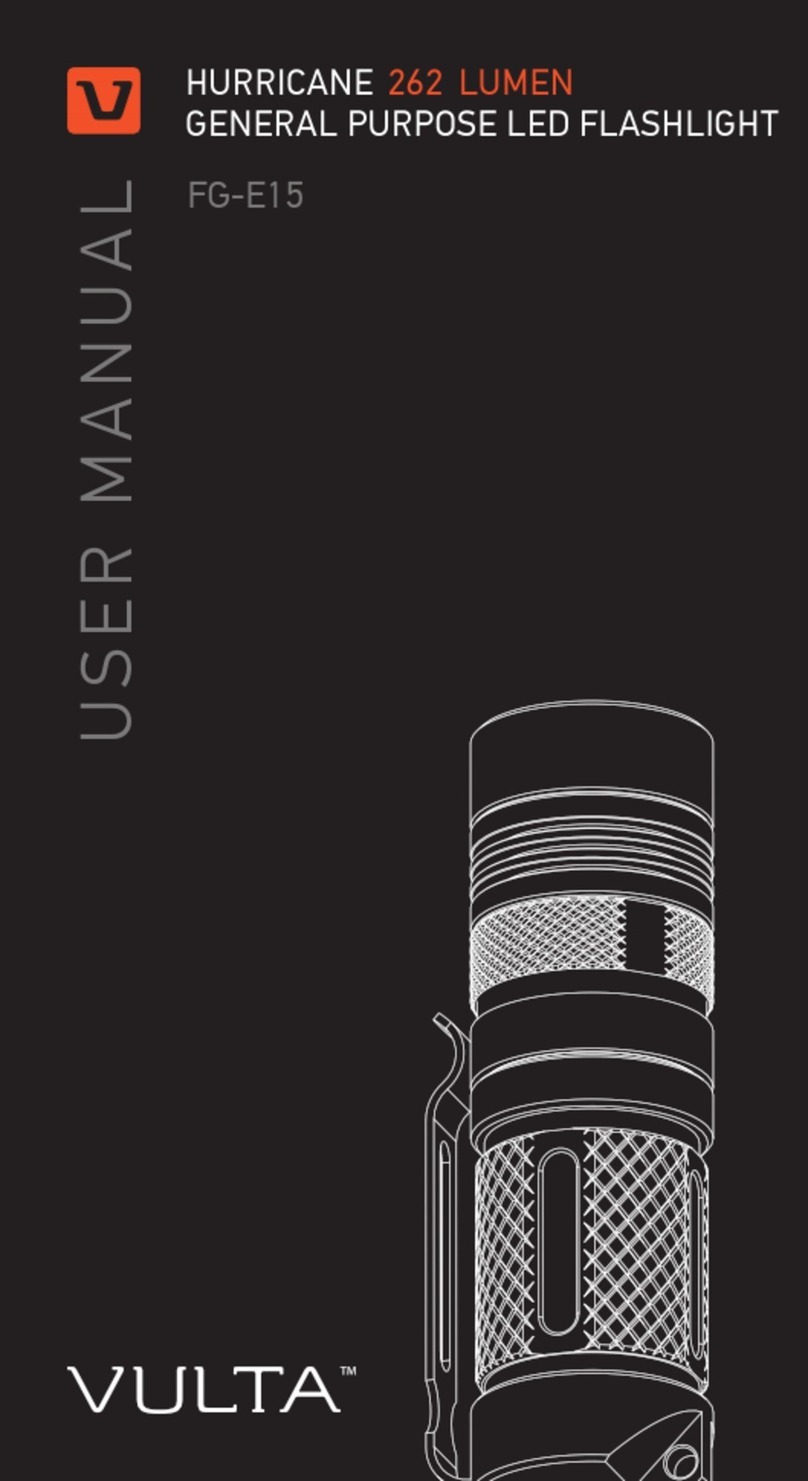
vulta
vulta hurricane 262 lumen fg-e15 user manual
